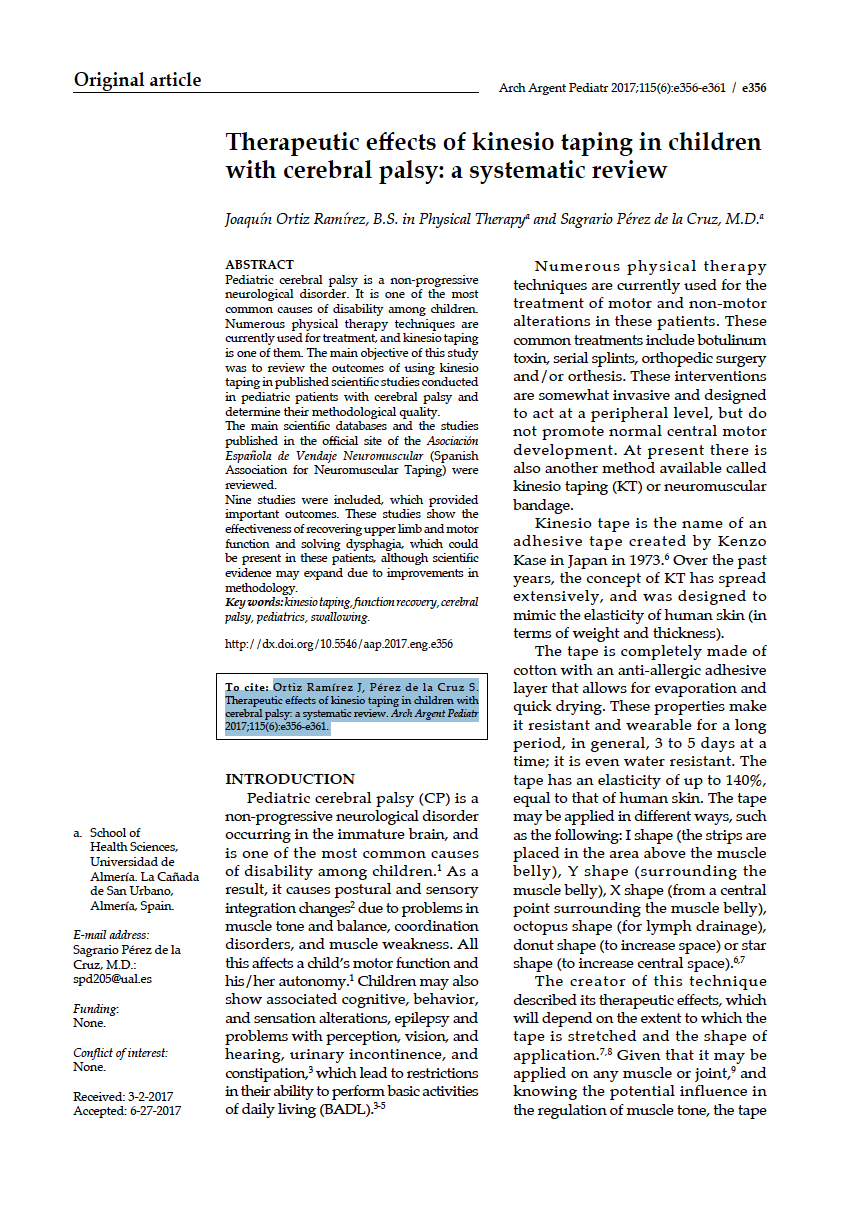Therapeutic effects of kinesio taping in children with cerebral palsy: a systematic review
Joaquín Ortiz Ramírez, B.S. in Physical Therapya and Sagrario Pérez de la Cruz, M.D.a
Abstract
Background– The main objective of this study was to review
the outcomes of using KT in published scientific studies conducted in pediatric patients with CP and determine their methodological quality.
Methods/Materials-To analyze the internal validity of studies,
section A (screening and detailed questions) of the Critical Appraisal Skills Programme (CASP) guidelines was used to make a critical reading of clinical trials (Table 2). These guidelines are made up of 11 questions grouped into three sections. The CASP guidelines serve to quickly obtain useful information about the methodological quality of clinical trials, thus enabling to make
a critical appraisal
Results-A total of 480 articles were identified in the different databases and through the AEVNM. In relation to the year of publication, a significant increase in KT studies was observed in recent years; 2012 and 2014 were the years with the highest number of publications.
Conclusion– Most outcome measures observed in the studies included in this review showed the benefits of KT; however, from the stance of scientific evidence and methodological quality, studies have not been conclusive. It is necessary to define standard criteria to demonstrate the effects of KT because there is no clear consensus on the basic aspects of KT, such as the duration of tape
application or the extent of stretching used.
Keywords– kinesio taping, function recovery, cerebral
palsy, pediatrics, swallowing, kinesio tape, tape with wisdom, kinesio live different science




